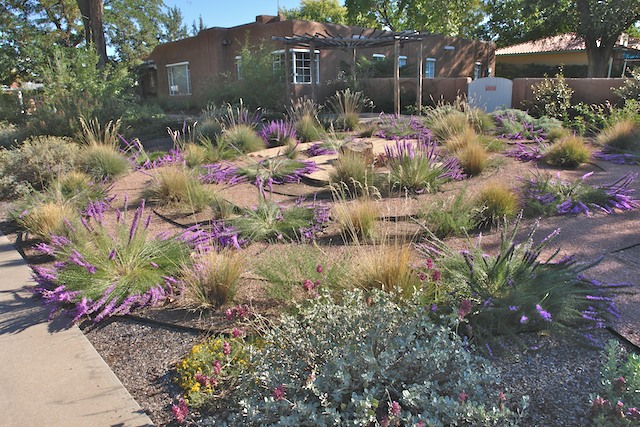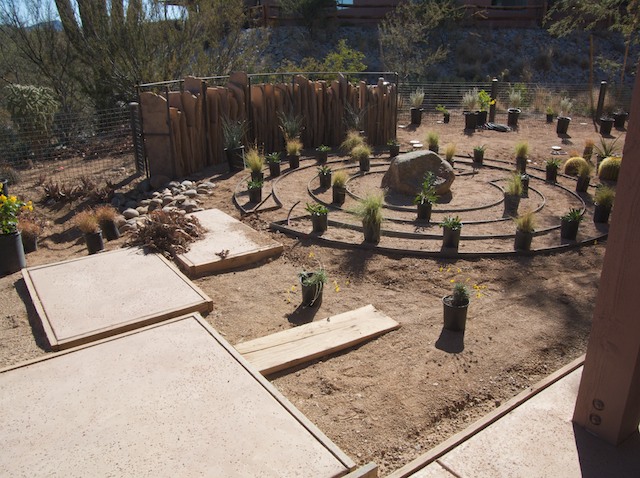 Dear Gardening-Gone-Wilders, allow me to introduce myself. My name is Scott Calhoun and I’m a writer and garden designer living in Tucson, Arizona. I love exploring backroads and backcountry in search of plants, gardens, architecture, and food. I’m the author of five books which are mostly about plants: Yard Full of Sun; Chasing Wildflowers; Designer Plant Combinations; The Hot Garden; and Hot Pots. I also write for magazines including American Gardener, Horticulture, Sunset, and Wildflower. Currently, I’m working on a book about the mighty American agave plant.
Dear Gardening-Gone-Wilders, allow me to introduce myself. My name is Scott Calhoun and I’m a writer and garden designer living in Tucson, Arizona. I love exploring backroads and backcountry in search of plants, gardens, architecture, and food. I’m the author of five books which are mostly about plants: Yard Full of Sun; Chasing Wildflowers; Designer Plant Combinations; The Hot Garden; and Hot Pots. I also write for magazines including American Gardener, Horticulture, Sunset, and Wildflower. Currently, I’m working on a book about the mighty American agave plant.
Here are the vital statistics about my gardening region: USDA 9b; Sonoran desert; 3012 feet above sea level; 12 inches of annual precipitation; record high 117; record low 16; alkaline soil; preferred regional tool: Mikita electric jackhammer (for planting 1 gallon plants).
And now…Going in Circles:
I have nothing against rectangles. In fact, if I were to build my dream house again (it would be my third so-called dwelling) it would be a clean-lined rectangle—probably a prefab – along the lines of something from Modern Cabana. And the garden would likely be a linear bristle of trunked yuccas combined with a menagerie of penstemon and cacti laid out in grids. I would hope that when viewed from above, it might look like the love child of American painter Jasper Johns and North Carolina nurseryman Tony Avent. I have spent a good deal of time trying to explain to my fellow desert-dwellers that a Southwestern garden comprised mostly of native plants doesn’t have to be an informal meander of lines—it can be disciplined and formal if you are so inclined.
Still, the desire for curviness is hard to overcome. When you take a line and bend it, the resulting arc can be sensuous. It can also add a human quality to the design. A well-placed curve can subconsciously suggest a smile, breast, bottom, or earlobe. And who says garden design isn’t sexy?
Most of my clients request curves outright, and when I can make it work in their space, I comply with their wishes. But over the last couple of years, I have to admit that I’ve been pushing the straight lines a little—mainly because I get tired of seeing curves, and curvy shapes, abused so badly. While a curve that looks like a bottom is sexy, I’m not convinced that a kidney is a particularly lusty organ whose shape we should mimic in our gardens. Who hasn’t lamented a bean-shaped planting bed plunked arbitrarily in a front yard?
What I was looking for was a more dynamic, rigorous, and intentional way to use curves in the garden. Where I found it was in shape that combines formality and curves: the circle. The first designer I found using curves in this way was New Mexico designer, Judith Phillips. When I was visiting her in Albuquerque, she showed me one of her designs whose central feature was a labyrinth of concentric circles planted-out with alternating blue oat grass (Helictotrichon sempervirens), blazing star (Liatrus punctata), and purple prairie clover (Dalea purpurea). The design was both formal and informal, and the shape itself was a nod to Native American pottery design.
In short I liked it. A lot. And like any good designer worth his salt, I stole it—I mean adapted it—for my own purposes. I designed a garden where a small labyrinth (with two planting rings) would be the central element. Like Judith’s design, I placed a large boulder in the center. Instead of blue oat grass and purple prairie clover, I substituted blue grama (Bouteloua gracilis) and hill country penstemon (Penstemon triflorus) which are a little better adapted to Tucson. I took the photo below last week, just before the plants went in the ground. I should add that my friend and fellow designer, Debra Huffman, designed the nifty concrete pattern and recycled flagstone wall behind the labyrinth. As it grows in, I’ll report back.


